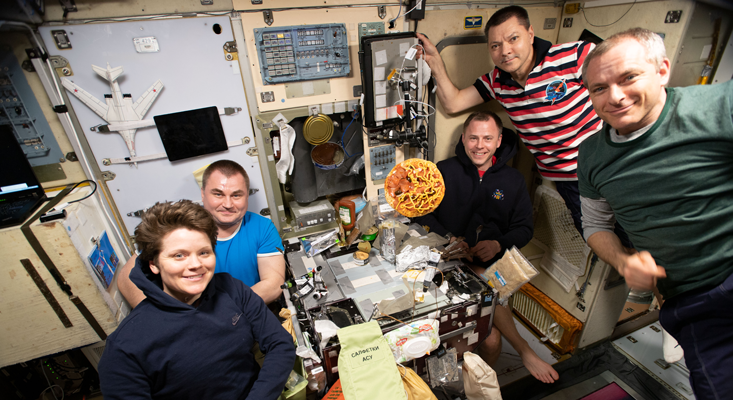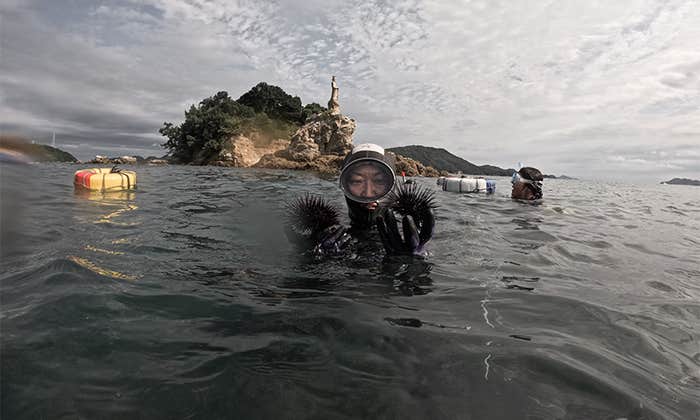The great polar explorer Roald Amundsen credited expedition cook Adolf Henrik Lindstrøm as having “rendered greater and more valuable services to the Norwegian polar expedition than any other man.” He was citing not only Lindstrøm’s vaunted prowess as a chef, but his keen sense of humor, with which he regularly defused conflicts among the isolated crew members.
Lindstrøm’s joviality is seen by behavioral scientists as an essential component of a small group that must live in closed quarters over an extended period of time, such as a four- to six-member expedition to Mars. As Noshir Contractor of Northwestern University put it, “the human body is the one object on a spacecraft over which engineers have no control.” Contractor, a professor of behavioral science, was speaking at this year’s annual meeting of the American Association for the Advancement of Science (AAAS) in Washington, D.C. Although we have learned a lot from the space program about such hazards to astronauts as radiation and gravity fields, Contractor said, “It is only in the past decade or so that we have begun to write the manual … for the social impacts that accompany humans who are going into space.”With increasing time in isolation, crews exhibited a decline in their ability to think together and solve problems.

A trip to Mars would last almost three years. It would take 259 days to get there, and the crew would have to stay on the Red Planet for an Earth-year to be in proper position to return home, another nine-month journey. That crew might comprise several nationalities and cultures and other demographic variations. Due to the distance, communications with Earth could be delayed up to 22 minutes each way, requiring the crew to be essentially autonomous in case a problem arose. Could they get along with each other and resolve crises without the nearly instantaneous backup that mission control has provided for astronauts on the International Space Station and even the moon?
The Human Exploration Research Analog (HERA) project is a human Petri dish, located at NASA’s Johnson Space Center near Houston, Texas, and designed to study interactions among several humans in a small space over extended periods of time. At the AAAS meeting, Leslie DeChurch, a professor of communication studies at Northwestern University, described HERA isolation experiments in which nine four-person crews spent 30 to 45 days living under conditions that simulated part of a journey to Mars. They were tested with four behaviors related to collective intelligence: making decisions, executing tasks, negotiating and resolving conflicts, and generating new ideas and solutions to problems. All of the groups showed improvement in behavioral areas of collective performance, but with increasing time in isolation, they exhibited a decline in their ability to think together, combine expertise, and solve problems creatively. There are typically periods of peak crew intelligence and periods of “problematic” crew intelligence. DeChurch correlated the latter partly to the increasing communications delay as the simulations moved farther from Earth.
With increasing time in isolation, crews exhibited a decline in their ability to think together and solve problems.
Jeffrey Johnson, a professor of anthropology at the University of Florida, related his observations among small groups, especially fishermen who were isolated for long periods in the Alaskan Arctic. During a prolonged strike that kept the men largely confined to their bunkhouses, he observed one of them emerge as what he called the “court jester.” Nicknamed by the others as Captain Sadsack, he alleviated tension and maintained cohesion between two groups of Italian-American fisherman from different geographic areas. Sadsack willingly accepted being the butt of jokes and pranks in which both groups participated. He never complained and was well liked by all, Johnson said.
Johnson followed up those observations with studies of groups at various research facilities in Antarctica and found that in the most effective of them, members of the crew adopted informal roles that contributed to group cohesion. “The clown was the most central figure” in one South Pole Station group, Johnson told me. “The clown bridged social relations between the scientists and the trades crew—the plumbers, electricians, and mechanics. His bridging role was fostered by his humor and fun-loving nature.”
Johnson added that less effective groups lacked a clown figure or others in informal leadership roles. He also found, in other experiments, that the importance of these informal roles in group cohesion scaled down to much smaller groups, even to the size of a Mars mission.
At HERA, scientists are improving their skill at analyzing interactions among the test subjects, and using their data to predict how participants would behave in larger and longer missions. If, in the 1970s, Contractor said, Skylab’s mission control had the behavioral insights that scientists now have, it could have predicted the unprecedented work stoppage by the crew of Skylab-4. The crew, which had developed decreasing internal cohesion as compared with the previous missions, shut down communications with Houston for a weekend and relaxed. It was—so far—the only “strike” by astronauts in the history of space exploration.
A similar facility to HERA is HI-SEAS—Hawaii Space Exploration Analog and Simulation, on the high slopes of Mauna Loa. HI-SEAS experimental groups tend to be larger, up to six persons, and stay in place longer, eight to 12 months, as compared with HERA groups, according to Steve Kozlowski, a professor of organizational psychology at Michigan State University. The HI-SEAS subjects are studied in real time and each person wears an electronic badge that monitors interactions among the group members. Among the findings so far, Kozlowski said, is that cohesion is high at the start of a simulated mission, but after four to seven months, one or more persons will begin to “desynchronize” from the rest of the team. Others do so later. By the end of the mission, cohesion is “all over the place,” he said. This has occurred in every HI-SEAS mission longer than six months, and would be a serious concern in a Mars mission, which will be up to six times longer.
Tom Williams, a research scientist at NASA who leads a team focused on human factors and behavioral performance, said the space agency was working to identify the many risks to crew health and performance during a Mars mission. So far NASA has isolated 32 separate risks. “It doesn’t mean we think team dysfunction is going to cause a mission to fail, but we think we better need to understand that, to make sure that we can adopt preventive strategies.”
Group dynamics were scarcely an issue back in the days of Mercury and Gemini. As Contractor said, “Many of the mental and physical characteristics that Tom Wolfe referred to in The Right Stuff are not going to be valid today, when much greater emphasis has to be placed on crew members working together cohesively, rather than being celebrated for their rugged individualism.”
Harvey Leifert is a science writer based in Bethesda, Maryland.
Lead photo shows the HI-SEAS research team on the Mauna Loa volcano in Hawaii. Courtesy of NASA.


























